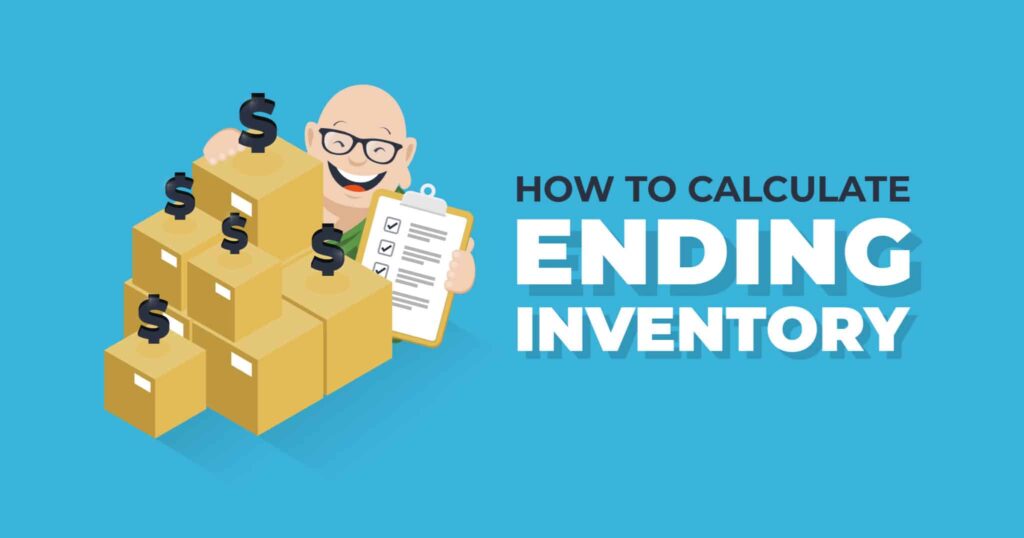Do you know how to calculate ending inventory? This simple calculation tells you the status of your end-of-period inventory. Knowing how to calculate ending inventory and continually monitoring it is critical for growing your business and maintaining profitability. It can also prevent problems such as overstocks or stockouts from growing out of control.
What is Ending Inventory?
Ending inventory is an accounting term that refers to the value of the inventory you have left at the end of an accounting period. The amount you have left over, expressed as a dollar value, is both your ending inventory for the current period, and the beginning inventory (or the amount you start with) for the next accounting period. This simple metric tells you how much cash you have tied up in inventory on an ongoing basis.
Depending on the size of your business, you could physically count your inventory every month. But for many businesses this would be a cumbersome, time-consuming process. Today’s inventory management systems integrate smoothly with warehouse management systems and sophisticated 3PL fulfillment platforms to put real-time numbers at your fingertips in seconds.
What is the Ending Inventory Formula?
Many businesses track their financials in monthly accounting periods. Ending inventory takes into account all that happens each month, starting with beginning inventory (the cost of purchasing or manufacturing any inventory you added during the month) and the cost of goods sold that month. To calculate ending inventory, the numbers you’ll need are:
- Beginning Inventory: prior month’s ending inventory value
- Purchases: cost of inventory added during the month
- Cost of Goods Sold (COGS): cost of inventory sold during the month
Once you have these numbers, you can plug them into the following formula to calculate ending inventory.
Methods for Calculating Purchases and COGS
There are three accounting methods used to calculate inventory value. Once you choose a method, it’s important to stick to that method so that you’ll have consistent numbers to compare from month to month and year to year.
FIFO
The First in, First Out or FIFO inventory method assumes that your inventory is being sold in the order it was purchased and added to the warehouse. (Note, it doesn’t matter whether this is actually true; it’s simply one way of keeping track of how much cash you have tied up in inventory.) Under the FIFO method, the cost of the oldest item in the warehouse is attributed to the first identical item sold that month. Because the cost of purchasing goods tends to rise over time, the FIFO method usually results in rising ending inventory values over time. As older, less costly inventory is sold, you are left with higher-value, more recently purchased goods. During periods of inflation or rising costs, this method is generally preferred by accountants.
LIFO
The Last In, Last Out or LIFO inventory method assumes that the newest inventory is sold first. Under this method, the cost of the most recently purchased item is the cost attributed to the first item sold that month. Because the cost of purchasing goods tends to rise over time, ending inventory values tend to decrease over time when using the LIFO method. As higher-value inventory is sold, you are left with older, less-costly goods.
Weighted Average
Under the Weighted Average inventory method, all costs are averaged. Total purchase costs and total COGS are divided by the number of units purchased or sold. To arrive at the ending inventory value, you multiply the number of units left at the end of the month by the average cost per unit. The weighted average method is the simplest to use when all items are identical and cost does not vary much over time.
Why is Ending Inventory Important?
Inventory is considered a business asset when filing taxes. Knowing the value of your ending inventory from month to month is an important part of keeping an accurate balance sheet. In addition, inventory costs can significantly affect profitability. Like balancing your checkbook, calculating your ending inventory can identify discrepancies between what you think you have and what you actually have, between forecasted revenue and what you’re actually making. Ask yourself:
- Do actual numbers match projected numbers?
- Do you need to adjust pricing to cover rising costs?
- Are you experiencing frequent stockouts or overstocks?
If you are keeping more inventory than you need in stock, you may be paying too much in holding costs. Inventory management tools, such as the economic order quantity formula can help you figure out how often and how much to order to reduce inventory costs. On the other hand, if your actual inventory numbers are lower than expected, this may be a sign of theft or accounting error.
Ending Inventory Takeaways
While tracking ending inventory may seem complicated, it is a common practice that most inventory management systems that have accounting integration can handle with ease. If you outsource warehousing and fulfillment services to a 3PL or third party logistics company, these integrations are managed for you. You can request customized monthly reports, track inventory in real time, and easily access the numbers you need.
Calculating ending inventory is not only important for tax purposes, it is an important way to track costs and net profitability of your business. It can help you identify ways to reduce logistics and inventory costs. And by keeping an eye on it you can catch problems or discrepancies that, if not addressed, will carry over into the next month and can quickly multiply. Ergo, ending inventory is a critical part of maturing small businesses into something bigger, and maintaining ongoing profitability for enterprises.
If you’re looking for a fulfillment partner that knows how to pair advanced inventory and order management technology with a skilled workforce to yield great results for your brand, contact the ShipMonk team to speak with a fulfillment expert. You can also check out our eCommerce fulfillment platform video for a deeper look at our advanced approach:





